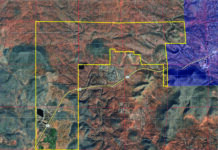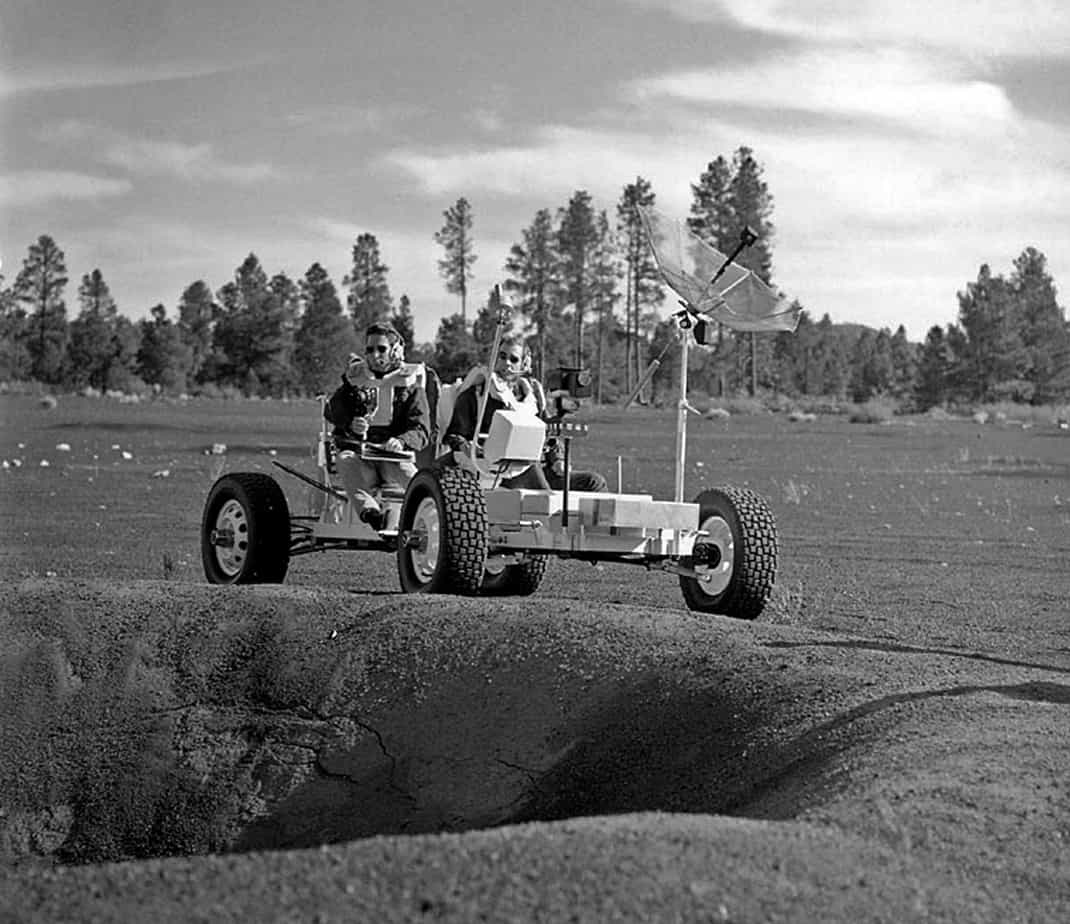Fifty years ago this Saturday, July 20, Americans were captivated by the Apollo 11 journey to the moon in 1969.
Two previous Apollo missions had entered into orbit around the moon but for the first time, two astronauts would descend and attempt to land on the moon. An estimated 600 million people around the world watched as they piloted their lunar module safely to the surface of the moon.
A few hours later they set foot upon lunar soil. The two astronauts walked on the moon for two and a half hours and all of it was televised live back to earth, a technological first.
On the anniversary Americans are heralding this achievement, reliving it and retelling it to those born after 1970.
In October 1957, the Soviet Union launched the first artificial spacecraft, putting the Sputnik satellite into orbit. One year later the U.S. President Dwight Eisenhower formed the National Aeronautics and Space Administration.
On April 12, 1961, Soviet cosmonaut Yuri Gagarin became the first human to travel into space, orbiting the earth once and returning safely. Americans and NASA were close, but had fallen further behind in the space technology race. Twenty-three days after Gagarin’s flight, Alan Shepard launched in a Redstone rocket for a 15-minute suborbital flight and splashdown. Just 20 days after Shepard’s flight, U.S. President John F. Kennedy made this challenge: “I believe that this nation should commit itself to achieving the goal, before this decade is out, of landing a man on the moon and returning him safely to earth.”
Chris Craft, director of Flight Operations for NASA, said Kennedy stunned NASA engineers — that such a goal of landing on the moon had not even been contemplated. Even the Soviets, who had a sizable lead in the space race, had not stated such a goal.
There was a military tenor of the space race. While it boasted bravery and technological achievement, the rockets were first developed to deliver ballistic nuclear weapons. The ability to put rockets into earth’s orbit created a culture of fear. Reportedly Kennedy, feeling the sting of the failed Bay of Pigs invasion in Cuba one month earlier, combined with the Soviet milestone, prompted the president to stretch NASA’s mission statement.
America’s space race was produced in three segments.
- Six Mercury missions in a small spacecraft with one astronaut and no ability to steer the capsule.
- 10 Gemini missions with two astronauts and the ability to control flight and rendezvous in space and dock with a second craft.
- The 17 Apollo missions, a three-man crew designed to travel away from earth’s atmosphere, to the moon and back.
The race to be first meant taking risks. Certain parts of the Apollo lunar missions had no safe alternatives. A failure of the command module engine to fire or turn off and fire again — something required to orbit the moon — would have stranded any of the 27 Americans who flew in orbit around the moon from returning safely home.
Had the lunar module ascent engine failed, there was no backup propulsion for the 12 men to leave the surface, and no plan other than for the three-man command module to return home with one astronaut alone.
Four missions in particular put astronauts in a life-and-death struggle.
- 1962: During John Glenn’s Mercury 6 mission, the first to put an American in orbit, alarms told mission control that the capsule’s heat shield had come loose. The mission was ended early and Glenn was brought into re-entry. The heat shield held and disaster was averted.
- 1966: Neil Armstrong and Dave Scott in Gemini 8 suddenly lost control of their spacecraft when a retro jet stuck open spinning the capsule more than one revolution per second. Near unconscious, Armstrong set the capsule into emergency re-entry. The death of two astronauts was averted.
- 1967: While three astronauts, Gus Grissom, Ed White and Roger Chaffee, were conducting tests on the launch pad of Apollo 1, a spark ignited a fire inside the capsule killing them.
- 1970: Apollo 13 suffered a large explosion, damaging almost all of the life-sustaining oxygen and fuel cells needed to navigate. Only the emergency use of the lunar module engine and life support systems saved the astronauts as they powered down everything else and coasted to a safe splashdown.
All the missions from Apollo 8 to Apollo 17 were televised live to the world, with any catastrophe a threat to end the space program. The Soviet program, shrouded in secrecy in the 1960s, lost five cosmonauts in accidents on re-entry, yet few were known of until the collapse of the Soviet Union in the 1990s.
In six Apollo missions, 12 men walked on the moon in six landings from 1969 to 1972. Astronauts traveled 60.7 miles on the moon on foot on an a lunar rover. They brought back 842 pounds of moon rocks for study. Only 27 men, all of them Apollo astronauts, have left the confines of earth’s gravity.
Northern Arizona played a prominent role in the time astronauts spent on the moon. All 12 men to walk the surface trained at Meteor Crater and Sunset Crater north of Flagstaff.
“These guys were truly rock stars. People would come out and want their autograph, take their picture,” Kevin Schindler, historian for the Lowell Observatory, told the Sedona Red Rock News. “People saw them as saviors who were going to beat the Russians.”
When snow covered the training site, the astronauts moved to a prepared cratered landscape two miles south of Cottonwood. Astronauts used the site to test drive the lunar rover used on the final three Apollo missions to the moon.
As many as 400,000 employees were focused on every aspect of the missions, inventing and perfecting spacecraft, collaborating with engine development, building spacecraft platforms involving many new developing American technology companies. NASA spent $19.5 billion on the Apollo project, estimated at $150 billion in today’s dollars. NASA funding reached a peak of 4.4% of the federal budget in 1966. In comparison, funding in 2009 for NASA was 0.02% and it was slashed even further with the Space Shuttle program ending in 2011.
The space race that started as part of the Cold War weapons battle ended as part of opposition to the Vietnam War. Anger about government costs were conflated and NASA’s budget was cut.
The last Apollo mission to send Americans to walk on the moon ended in December of 1972, also the last time any human left earth’s gravity. No country has returned to the moon, but recently China became the third nation to land a unmanned spacecraft on the moon, after the Soviet Union in 1959 and the United States in 1964.
Don Eicher can be reached at 282-7795 ext 126 or by email at deicher@larsonnewspapers.com



















